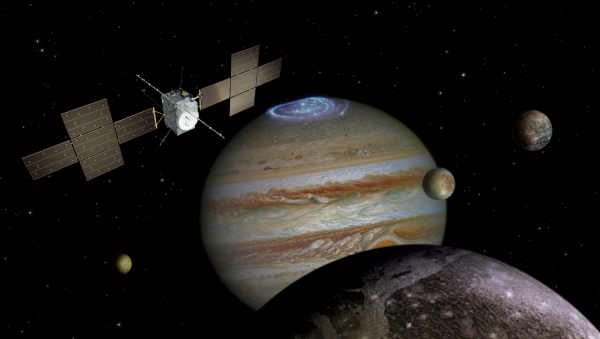The European Space Agency (ESA) has launched a spacecraft named Juice on a decade-long mission to explore Jupiter and its icy moons. On Friday, April 14, 2023, the Ariane rocket took off from French Guiana to send the robotic explorer to Jupiter, where it will investigate Europa, Callisto, and Ganymede. These three moons are believed to contain buried oceans that may harbor sea life.
Juice will travel approximately 4 billion miles (6.6 billion kilometers) to reach Jupiter, completing 35 flybys while circling the planet. It will fly within 125 miles (200 kilometers) of Callisto and 250 miles (400 kilometers) of Europa and Ganymede, before attempting to orbit Ganymede, the primary target of the €1.6 billion ($1.8 billion) mission.
The spacecraft, about the size of a small bus, will not reach Jupiter until 2031. It will rely on gravity-assist flybys of Earth and our moon, as well as Venus to reach its destination. Juice is taking a long, roundabout route to Jupiter, but it is necessary to avoid radiation from Jupiter that could damage the spacecraft.
The mission is significant as no spacecraft has ever orbited a moon other than our own. Ganymede is the solar system’s largest moon and thought to have an underground ocean holding more water than Earth. Europa, another moon, is also attractive to scientists hunting for signs of life beyond Earth. Juice will keep its Europa encounters to a minimum, however, because of the intense radiation there so close to Jupiter.
Juice’s sensitive electronics are encased in lead to protect against radiation, and the spacecraft is wrapped with thermal blankets as temperatures near Jupiter hover around minus 380 degrees Fahrenheit (minus 230 degrees Celsius). Its solar panels stretch 88 feet (27 meters) tip to tip to soak in as much sunlight as possible.
Juice is the first large-class mission to explore the Jupiter system since NASA’s Galileo mission that ended in 2003. The spacecraft is a product of cooperation between ESA and its partners from the US, Japan, Russia, and other countries.
